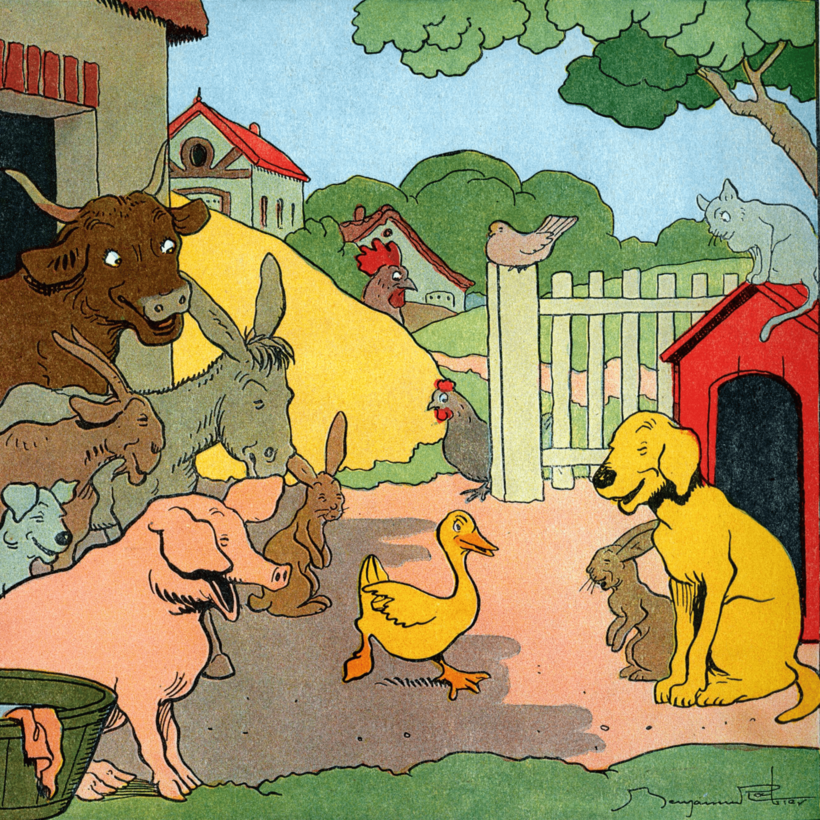In England, the song of the chiffchaff heralds spring. In la France profonde the signs are more exotic, as John Lewis-Stempel discovers one February morning when his horse crashes through an electrified fence and bolts into a walnut orchard.
After calming the terrified animal, Lewis-Stempel leads him back to his field where the cause of the alarm is revealed: a fire salamander, basking in the sunshine. Zeb the horse had never seen one of those in Herefordshire and nor had his owner. But as three species of lizard emerged from hibernation to join the party, he realizes that’s how you know winter has passed in Charente-Maritime.
La Vie is the story of a year spent in the village of La Roche, an hour’s drive inland from La Rochelle on the west coast of France. We’ve read such expat tales before, but Lewis-Stempel is not one for the sun lounger — he does not, as his new neighbors might say, faire le lézard — he is a working farmer who wants to learn the ways of French organic farming. That involves backbreaking work, but also constant delight at the richness of his surroundings.
As he says, every Brit who moves to rural France remarks that it reminds them of their childhood, whether that was the 1950s or 1980s. Principally, it’s the volume of polyphonic birdsong that strikes the newcomer — levels that may not have been heard in Britain since medieval times, Lewis-Stempel suggests. One night he hears five nightingales singing outside his window.
The home to which he and his wife committed themselves for a year stands just outside the village, a fin de siècle, honey-colored limestone maison toute seule, “the loveliest I have ever lived in”, with a hay barn, a dovecote, fields, orchards, 30 vines and a precious potager (kitchen garden).
Along with Zeb the horse they bring a border terrier, Rupert, and a young black Labrador who has already given them a bracing encounter with French bureaucracy. Rather like the old car number plate system in Britain, registered pedigree dogs in France must be named according to the letter of the year. The Lab was born in the year of “P”, so she’s called Plum. You wanted to call her Zelda? Well, tough. And here’s her ID card.
Every Brit who moves to rural France remarks that it reminds them of their childhood.
Lewis-Stempel’s French is poor, but he swears well thanks to binge-watching a detective series, and he sets about his farming with gusto. His 33-foot square potager is the focus of his attention, for good reason: about 20 percent of fresh produce grown in France comes from these little plots, he says.
In Britain he kept 120 sheep, but here he had just five Ouessant sheep, a hardy breed from Brittany so small that they only reach his knees. But they are blessed with wool that knitters covet, so they earn their keep — shearing all five will make him $215.
Much is familiar to him — sowing potatoes is hard work wherever it’s done — but there are surprises. Hay, for instance. In Britain it’s fed to the animals in winter, but in the Charente it’s needed at the height of summer, when the scorched grass has stopped growing. The hay is supplemented with lime leaves, harvested from a row of trees that provide shade in summer, wood for the winter fire and flowers for a tilleul infusion.
John Lewis-Stempel sets about his farming with gusto.
There is quiet respect for Lewis-Stempel from his neighbors, as there is for all peasant farmers in France — by the end of the year he had even joined the peasants’ trade union, the confédération paysanne. His immediate neighbor, Bernard, an elderly truffle farmer who resembles Obelix, confers a rare honor when he invites the author and his wife to his home, where discussion of truffle orchards sets Lewis-Stempel to thinking about planting his own truffière. In June he orders half a dozen hazel trees mycorrhized with Tuber melanosporum.
It’s clear that he loves shopping for new kit. At the local garden center a cold press machine for sunflower oil is irresistible, and with his briquette maker he turns pulped copies of the Sud Ouest newspaper into logs for the fire. When water lilies are wanted to cover the cistern, there is only one place to buy them: the Latour-Marliac nursery in Lot-et-Garonne, founded in 1875, where Claude Monet bought his.
Readers of his many books and his Times of London nature columns will know how easily Lewis-Stempel’s writing marries the lyrical with the descriptive, and La Vie, part journal, part commonplace book (it’s sprinkled with recipes learned during the year), won’t disappoint.
Occasionally one wonders if the rest of the family enjoys it all quite as much as the author. One night his son Tris throws “a bottle of male grooming product” in the direction of a pygmy owl that won’t stop hooting. And don’t many of the Brits who lose themselves in deepest France go quietly mad with boredom?
Not Lewis-Stempel, who is always busy and has that sustaining trick of imagining himself to be a character in a film — Monsieur Hulot, say — or at the center of a Watteau tableau. And his capacity for wonder never flags. A close sighting of red deer hinds in a Charentais forest is magical, revelatory even; in that moment he understands at last why St Hubert, the patron saint of hunters, turned to God after a similar encounter.
Richard Preston is an assistant editor at The Times of London

